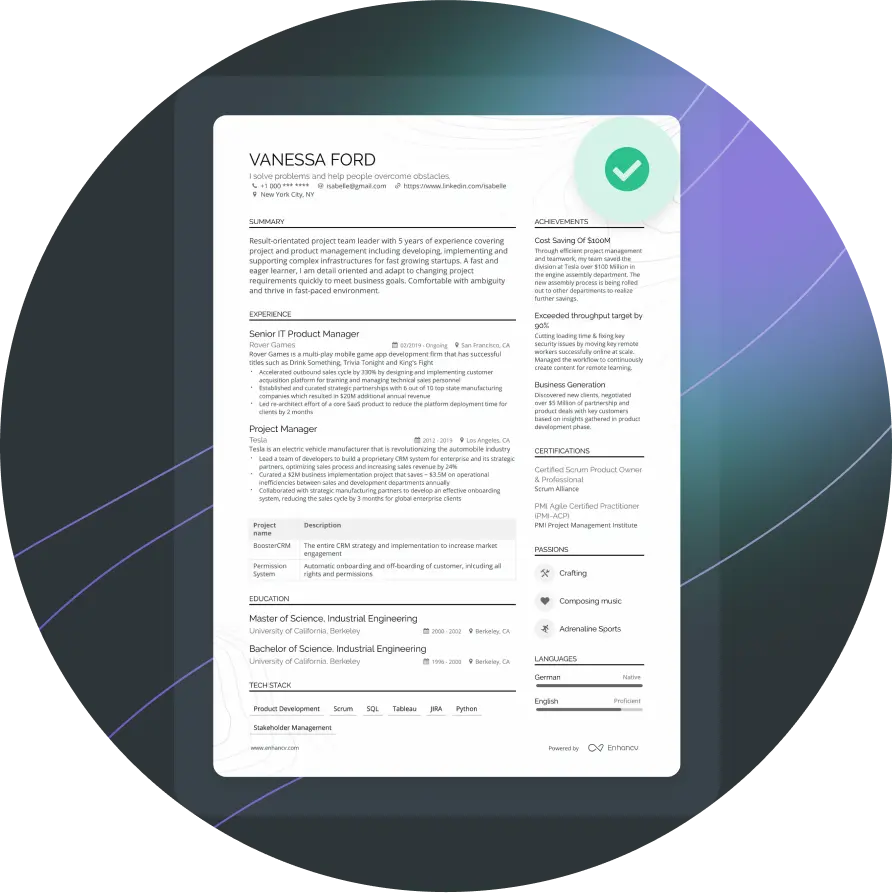
Make sure your resume leaves a lasting impression!
Resume Booster is a free and rapid tool that assists you with creating a great resume
ATS Compatibility Review
Visual Enhancement Suggestions
Consistency and Error Analysis
Content Variety Review
Impactful Wording Guidance

Amplify your resume with our complete resume enhancement toolkit
Content Analyzer
With our content analyzer, you not only fix spelling mistakes but also receive actionable tips to enrich your content. For example, if you've missed adding measurable achievements, our tool will underline the section requiring attention. Its algorithm, based on thousands of successful resumes, ensures you present yourself in the best possible light.
Referral Link
Sharing your resume with someone who can offer a fresh perspective is an excellent strategy. Use the referral link to your resume and share it with someone who's worked in the same company, or even better, in the same department or position. Connect with ex-employees on LinkedIn or join relevant Facebook Groups. Their feedback can provide valuable insights to help you stand out.
13 Steps to boost your resume
Certainly, here are some steps you can take to improve your resume and increase your chances of standing out to potential employers:
- Tailor Your Resume: It's essential to customize your resume for each job application. Understand the job requirements, key skills needed, and tailor your resume to highlight your experience in these areas.
- Keywords: Look at the job description and identify keywords related to skills, qualifications, and responsibilities. Use these keywords naturally in your resume.
- Keep It Concise: Your resume should be as concise as possible, usually no more than two pages. Recruiters often skim resumes, so making yours easy to read will increase the chances that they notice your key qualifications and achievements.
- Use Action Verbs: Start bullet points with action verbs like "led", "managed", "developed", etc., to make your achievements and responsibilities sound more impactful.
- Quantify Achievements: Use numbers to illustrate the impact of your work. For example, if you led a project, you might note the project's size or the revenue it generated.
- Professional Summary: Include a professional summary at the top of your resume. This is a brief paragraph that summarizes your qualifications and career goals, effectively serving as a quick pitch to potential employers.
- Relevant Skills: Include a skills section in your resume where you list your most relevant skills. These could be technical skills, soft skills, or language skills.
- Update Your Education Section: Make sure your education section is up-to-date, especially if you have recently earned a degree or certification relevant to the jobs you're applying for.
- Review and Proofread: Ensure there are no typos or grammatical errors, as these can leave a negative impression on employers. Use grammar and spell-check tools to help with this.
- Formatting: Ensure your resume is well-formatted and visually appealing. Use a professional, easy-to-read font and keep the formatting consistent.
- References: You can add a line at the end of your resume stating that references are available upon request. It saves space and keeps the focus on your qualifications.
- Update Your Resume Regularly: Make sure to update your resume with any new skills, accomplishments, or jobs regularly.
- Cover Letter: Always include a tailored cover letter unless the job application specifically states not to. A cover letter allows you to introduce yourself, express your interest in the position, and explain why you're a good fit.
Remember, your resume is your first impression to potential employers, so spend the necessary time to make it stand out.



